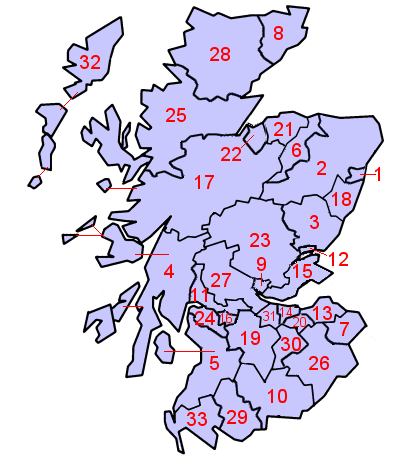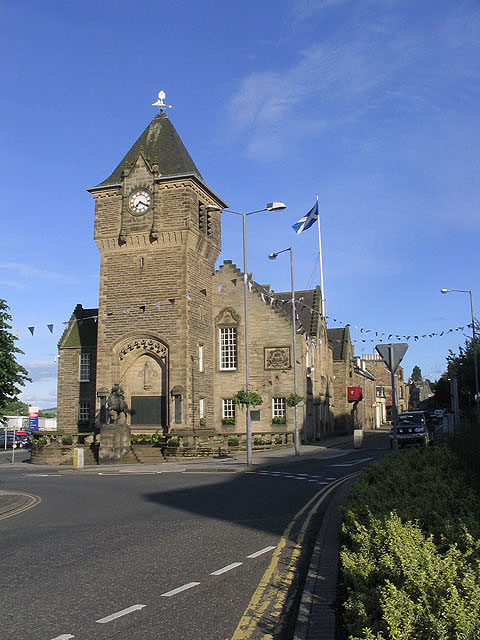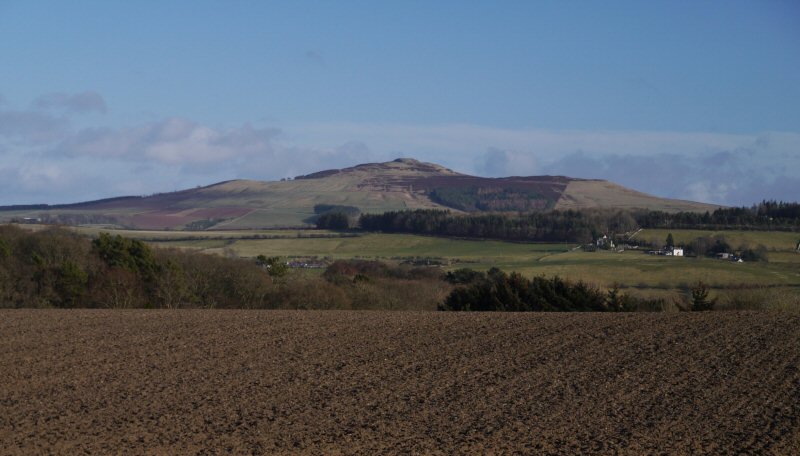|
Roxburgh, Ettrick And Lauderdale
Roxburgh, Ettrick and Lauderdale (''Rosbrog, Eadaraig agus Srath Labhdair'' in Scottish Gaelic) is a lieutenancy area of Scotland. The lieutenancy area was created on 1 April 1996, when local government was reorganised across Scotland under the Local Government etc. (Scotland) Act 1994. The lieutenancy area covers the combined area of the two abolished local government districts of Roxburgh and Ettrick and Lauderdale, which had been nominally separate lieutenancy areas prior to 1996, although both lieutenancies were held by John Scott, 9th Duke of Buccleuch. The lieutenancy area broadly corresponds to the historic counties of Roxburghshire and Selkirkshire, plus small parts of Midlothian and Berwickshire. See also Lord Lieutenant of Roxburgh, Ettrick and Lauderdale This is a list of people who have served as Lord Lieutenant of Roxburgh, Ettrick and Lauderdale. This office replaced the Lord Lieutenant of Roxburghshire and the Lord Lieutenant of Selkirkshire in 1975. *''Buccl ... [...More Info...] [...Related Items...] OR: [Wikipedia] [Google] [Baidu] |
Scottish Gaelic
Scottish Gaelic ( gd, Gàidhlig ), also known as Scots Gaelic and Gaelic, is a Goidelic language (in the Celtic branch of the Indo-European language family) native to the Gaels of Scotland. As a Goidelic language, Scottish Gaelic, as well as both Irish and Manx, developed out of Old Irish. It became a distinct spoken language sometime in the 13th century in the Middle Irish period, although a common literary language was shared by the Gaels of both Ireland and Scotland until well into the 17th century. Most of modern Scotland was once Gaelic-speaking, as evidenced especially by Gaelic-language place names. In the 2011 census of Scotland, 57,375 people (1.1% of the Scottish population aged over 3 years old) reported being able to speak Gaelic, 1,275 fewer than in 2001. The highest percentages of Gaelic speakers were in the Outer Hebrides. Nevertheless, there is a language revival, and the number of speakers of the language under age 20 did not decrease between the 2001 ... [...More Info...] [...Related Items...] OR: [Wikipedia] [Google] [Baidu] |
Lieutenancy Areas Of Scotland
The lieutenancy areas of Scotland are the areas used for the ceremonial lord-lieutenants, the monarch's representatives, in Scotland. The lord-lieutenants' titles chosen by the monarch and his legal advisers are mainly based on placenames of the traditional counties of Scotland. In 1794 permanent lieutenancies were established by Royal Warrant. By the Militia Act 1797 (37 Geo.3, C.103), the lieutenants appointed "for the Counties, Stewartries, Cities, and Places" were given powers to raise and command County Militia Units. While in their lieutenancies, lord lieutenants are among the few individuals in Scotland officially permitted to fly a banner of the Royal Arms of Scotland, the "Lion Rampant" as it is more commonly known. Lieutenancy areas are different from the current local government council areas and their committee areas. They also differ from other subdivisions of Scotland including sheriffdoms and former regions and districts. The Lord Provosts of Aberdeen, D ... [...More Info...] [...Related Items...] OR: [Wikipedia] [Google] [Baidu] |
Scotland
Scotland (, ) is a country that is part of the United Kingdom. Covering the northern third of the island of Great Britain, mainland Scotland has a border with England to the southeast and is otherwise surrounded by the Atlantic Ocean to the north and west, the North Sea to the northeast and east, and the Irish Sea to the south. It also contains more than 790 islands, principally in the archipelagos of the Hebrides and the Northern Isles. Most of the population, including the capital Edinburgh, is concentrated in the Central Belt—the plain between the Scottish Highlands and the Southern Uplands—in the Scottish Lowlands. Scotland is divided into 32 administrative subdivisions or local authorities, known as council areas. Glasgow City is the largest council area in terms of population, with Highland being the largest in terms of area. Limited self-governing power, covering matters such as education, social services and roads and transportation, is devolved from the ... [...More Info...] [...Related Items...] OR: [Wikipedia] [Google] [Baidu] |
Local Government Etc
Local may refer to: Geography and transportation * Local (train), a train serving local traffic demand * Local, Missouri, a community in the United States * Local government, a form of public administration, usually the lowest tier of administration * Local news, coverage of events in a local context which would not normally be of interest to those of other localities * Local union, a locally based trade union organization which forms part of a larger union Arts, entertainment, and media * ''Local'' (comics), a limited series comic book by Brian Wood and Ryan Kelly * ''Local'' (novel), a 2001 novel by Jaideep Varma * Local TV LLC, an American television broadcasting company * Locast, a non-profit streaming service offering local, over-the-air television * ''The Local'' (film), a 2008 action-drama film * '' The Local'', English-language news websites in several European countries Computing * .local, a network address component * Local variable, a variable that is given l ... [...More Info...] [...Related Items...] OR: [Wikipedia] [Google] [Baidu] |
Roxburgh (district)
Roxburghshire or the County of Roxburgh ( gd, Siorrachd Rosbroig) is a historic county and registration county in the Southern Uplands of Scotland. It borders Dumfriesshire to the west, Selkirkshire and Midlothian to the north-west, and Berwickshire to the north. To the south-west it borders Cumberland and to the south-east Northumberland, both in England. It was named after the Royal Burgh of Roxburgh, a town which declined markedly in the 15th century and is no longer in existence. Latterly, the county town of Roxburghshire was Jedburgh. The county has much the same area as Teviotdale, the basin drained by the River Teviot and tributaries, together with the adjacent stretch of the Tweed into which it flows. The term is often treated as synonymous with Roxburghshire, but may omit Liddesdale as Liddel Water drains to the west coast.Ordnance Gazetteer of Scotland, by, Francis Groome, publ. 2nd edition 1896. Article on Roxburghshire History The county appears t ... [...More Info...] [...Related Items...] OR: [Wikipedia] [Google] [Baidu] |
Ettrick And Lauderdale
Ettrick and Lauderdale (''Eadaraig agus Srath Labhdair'' in Scottish Gaelic) was one of four local government districts in the Borders region of Scotland from 1975 to 1996. History The district was created on 16 May 1975 under the Local Government (Scotland) Act 1973, which established a two-tier structure of local government across Scotland comprising upper-tier regions and lower-tier districts. Ettrick and Lauderdale was one of four districts created within the Borders region. The district covered the whole of the historic county of Selkirkshire and parts of the neighbouring counties of Berwickshire, Midlothian, and Roxburghshire. The new district covered all of six former districts and parts of another three districts, which were all abolished at the same time: ''From Selkirkshire:'' *Galashiels Burgh * Selkirk Royal Burgh *North District *South District ''From Berwickshire:'' * Lauder Royal Burgh *West District (part, being the parishes of Channelkirk, Lauder ( landward), ... [...More Info...] [...Related Items...] OR: [Wikipedia] [Google] [Baidu] |
John Scott, 9th Duke Of Buccleuch
Walter Francis John Montagu Douglas Scott, 9th Duke of Buccleuch and 11th Duke of Queensberry, (28 September 1923 – 4 September 2007) was a Scottish peer, politician and landowner. He served in the Royal Naval Volunteer Reserve in the Second World War, and represented Edinburgh North in the House of Commons for 13 years. He owned the largest private landed estate in the United Kingdom, covering some . The estate includes Drumlanrig Castle in Dumfries and Galloway, Bowhill House in Selkirkshire, and Boughton House in Northamptonshire. A fourth house, Dalkeith Palace, near Edinburgh, was most recently let to the West Central Wisconsin Consortium, which used the palace as a base for its study abroad program, until 2021. Early life Walter Francis John Montagu Douglas Scott was best known by his middle name John, and he was the only son of Walter Montagu Douglas Scott, 8th Duke of Buccleuch and 10th Duke of Queensberry, and the former Mary Lascelles. His sister Lady Elizab ... [...More Info...] [...Related Items...] OR: [Wikipedia] [Google] [Baidu] |
Shires Of Scotland
The shires of Scotland ( gd, Siorrachdan na h-Alba), or counties of Scotland, are historic subdivisions of Scotland established in the Middle Ages and used as administrative divisions until 1975. Originally established for judicial purposes (being the territory over which a sheriff had jurisdiction), from the 17th century they started to be used for local administration purposes as well. The areas used for judicial functions (sheriffdoms) came to diverge from the shires, which ceased to be used for local government purposes after 1975 under the Local Government (Scotland) Act 1973. Today, local government in Scotland is based upon council areas, which sometimes incorporate county names, but frequently have vastly different boundaries. Counties continue to be used for land registration, and form the basis of the lieutenancy areas (although the latter are not entirely identical). History Sheriffdoms or shires Malcolm III (reigned 1058 to 1093) appears to have introduced she ... [...More Info...] [...Related Items...] OR: [Wikipedia] [Google] [Baidu] |
Roxburghshire
Roxburghshire or the County of Roxburgh ( gd, Siorrachd Rosbroig) is a historic county and registration county in the Southern Uplands of Scotland. It borders Dumfriesshire to the west, Selkirkshire and Midlothian to the north-west, and Berwickshire to the north. To the south-west it borders Cumberland and to the south-east Northumberland, both in England. It was named after the Royal Burgh of Roxburgh, a town which declined markedly in the 15th century and is no longer in existence. Latterly, the county town of Roxburghshire was Jedburgh. The county has much the same area as Teviotdale, the basin drained by the River Teviot and tributaries, together with the adjacent stretch of the Tweed into which it flows. The term is often treated as synonymous with Roxburghshire, but may omit Liddesdale as Liddel Water drains to the west coast.Ordnance Gazetteer of Scotland, by, Francis Groome, publ. 2nd edition 1896. Article on Roxburghshire History The county appears to ... [...More Info...] [...Related Items...] OR: [Wikipedia] [Google] [Baidu] |
Selkirkshire
Selkirkshire or the County of Selkirk ( gd, Siorrachd Shalcraig) is a historic county and registration county of Scotland. It borders Peeblesshire to the west, Midlothian to the north, Roxburghshire to the east, and Dumfriesshire to the south. It derives its name from its county town, the royal burgh of Selkirk. The county was historically also known as Ettrick Forest. Unlike many historic counties, Selkirkshire does not have its own lieutenancy area, but forms part of the Roxburgh, Ettrick and Lauderdale lieutenancy area. History In the 1st Century AD Selkirk formed part of the lands of the native people who hunted it rather than settled there. Neither the Romans, Angles, or the Saxons cleared much of the forestry there and for centuries Selkirk was known for its forest coverage. Indeed, an alternative name for the county was Ettrick Forest. Under the Scottish kings the forest was regarded as Royal. Despite this it was not until the reign of James V that sheriffs were ... [...More Info...] [...Related Items...] OR: [Wikipedia] [Google] [Baidu] |
Midlothian
Midlothian (; gd, Meadhan Lodainn) is a historic county, registration county, lieutenancy area and one of 32 council areas of Scotland used for local government. Midlothian lies in the east- central Lowlands, bordering the City of Edinburgh, East Lothian and the Scottish Borders. Midlothian emerged as a county in the Middle Ages under larger boundaries than the modern council area, including Edinburgh itself. The county was formally called the "shire of Edinburgh" or Edinburghshire until the twentieth century. It bordered West Lothian to the west, Lanarkshire, Peeblesshire and Selkirkshire to the south, and East Lothian, Berwickshire and Roxburghshire to the east. Traditional industries included mining, agriculture and fishing – although the modern council area is now landlocked. History Following the end of the Roman occupation of Britain, Lothian was populated by Brythonic-speaking ancient Britons and formed part of Gododdin, within the Hen Ogledd or Old North. I ... [...More Info...] [...Related Items...] OR: [Wikipedia] [Google] [Baidu] |








